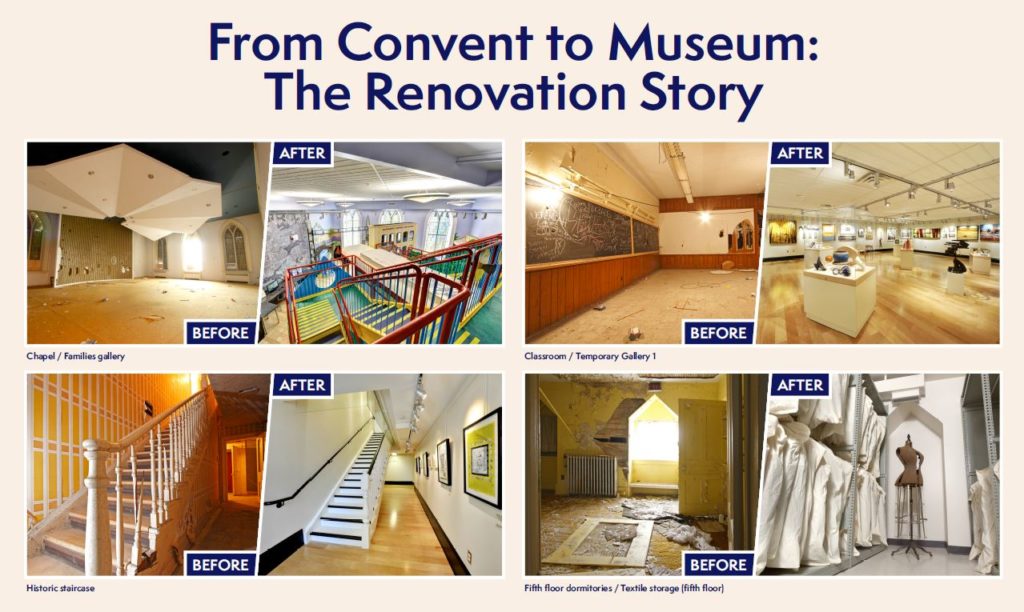
- This event has passed.
From Convent to Museum: The Renovation Story
December 5, 2017 - December 2, 2018

The Institute of the Blessed Virgin Mary, whose members are commonly known as the Sisters of Loretto, is a Roman Catholic congregation founded in France in 1609. In 1847, the Loretto Sisters arrived in Canada and by 1856 they had established a convent in Guelph, located on “Catholic Hill” near to the Church of Our Lady Immaculate (built between 1875 and 1883, designated as a basilica in 2014).
The Loretto Sisters opened the first Catholic school in the county and, later, founded a residential school that was the first boarding school for girls west of Toronto. Education was, and continues to be, a core mandate of the Sisters’ work.
In 1883, two additional stone buildings were constructed on the property adjacent to the convent to accommodate the educational needs of Guelph’s growing community — St. Stanislaus School for boys (rebuilt in 1977) and St. Agnes School for girls (the original structure is still standing). Night classes were also offered to students who tended farms during the day.
The convent was expanded again in 1953 and the addition became Notre Dame High School. Loretto Academy and Notre Dame were joined in 1962 and renamed Bishop Macdonell Catholic High School. By 1995, the student population had outgrown the site. The school was closed and the later additions were demolished in 2004. Although the original 1856 structure was preserved, the convent remained vacant until 2008.
Guelph Civic Museum began in the 1960s, when members of the Guelph Historical Society started to collect artifacts, which were displayed in store fronts and community centres. In Canada’s Centennial Year (1967), the Museum opened its first home in the horse stables, where the Farmer’s Market is currently located.
In 1980, the Museum moved to 6 Dublin Street South, at the corner of Dublin Street and Waterloo Avenue. Situated along the first road into Guelph and at the centre of the city’s pre-railway business district, the building was among the largest and earliest limestone structures in Guelph (before 1850). Originally operated as the Victorian Inn by William Armstrong, over the years the building housed a store, a school, a lumber merchant’s office, a boarding house and, from 1931 to 1977, the Knights of Columbus.
In 2000, the Museum created the “Growing Up in Guelph Children’s Gallery” that attracted many more visitors and significantly increased the number of family memberships. By 2008, the Museum had reached the full capacity of its Dublin Street location. The unoccupied Loretto Convent was an optimal new home for the Museum.
After securing a long-term lease with the Catholic Diocese of Hamilton, the City of Guelph began renovations to the convent. The extensive modifications included the restoration of the heritage staircase, between the main and second floors, and of the stained glass windows, originally located in the chapel and that can now be seen in the Families Gallery.
This display highlights the transformation of the building from convent to museum and includes photographs and artifacts preserved and collected by the Museum. The Loretto Sisters’ story continues in the Loretto Gallery, located on the third floor of the Museum.



